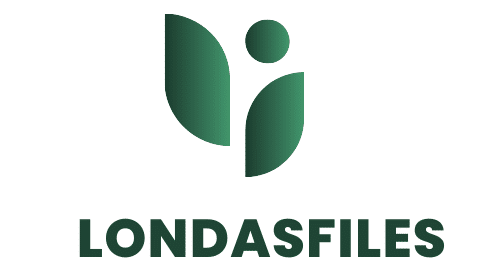Can Non-Invasive Brain-Computer Interfaces Improve Outcomes in Stroke Rehabilitation?

When a stroke hits, it leaves a devastating impact on the brain, causing cognitive and physical impairments that often require intense and prolonged rehabilitation. Luckily, strides in technology, particularly in the field of non-invasive brain-computer interfaces (BCIs), may provide some hope. By leveraging BCIs, we could potentially enhance the outcomes of stroke rehabilitation.
Understanding Brain-Computer Interfaces (BCIs)
Before we delve into the benefits of non-invasive BCIs in stroke rehabilitation, let’s first understand what exactly they are. Brain-computer interfaces are systems that establish a direct communication pathway between the human brain and an external device, such as a computer or a motor system. They work by capturing and interpreting the electrical signals produced by the brain, particularly those captured via electroencephalography (EEG).
Additional reading : What Advances in AI Are Revolutionizing Personalized Learning Pathways in Education?
Non-invasive BCIs are especially noteworthy, as they do not require surgical implantation. Instead, they work externally, often using a head-mounted device that picks up brain waves. These interfaces are predominantly used to help individuals with motor disabilities regain control over their movements or to help individuals with communication disorders regain language capabilities.
BCIs and Stroke Rehabilitation
Stroke survivors often struggle with motor control and cognitive function. Fortunately, non-invasive BCI technology could be a game-changer for these patients.
Also to discover : How Can AI-Driven Smart Mirrors Transform the Retail Clothing Experience?
Several studies have shown promise in utilizing BCIs to augment traditional stroke rehabilitation techniques. For instance, BCIs can provide neurofeedback, a form of training that enables patients to gain control over their brain waves. By visualizing their brain activity in real-time, patients can learn to self-regulate and improve their cognitive and motor functions over time.
Additionally, BCIs can help stroke patients regain control over their motor functions by enabling them to control external devices with their minds. For instance, a BCI can capture the intention of a patient to move a paralyzed limb and translate it into actual movement of a robotic limb, thereby allowing the patient to perform the desired action.
Current Research and Clinical Studies
The use of BCIs in stroke rehabilitation is still a relatively new field, but it’s one that’s gaining increasing attention from scholars and clinicians alike. There are a number of clinical studies, both completed and in-progress, investigating the potential of BCIs in stroke recovery.
For instance, a study published in the Journal of NeuroEngineering and Rehabilitation examined the effect of BCI-based training on brain reorganisation and motor function in stroke patients. The results suggested that BCI training could lead to significant motor function improvements (DOI: 10.1186/s12984-017-0336-9).
Google Scholar also provides a wealth of articles and studies on the subject, showing the breadth and depth of research in this field. Many of these studies underscore the potential of BCIs to transform stroke rehabilitation.
Future Perspectives: BCIs and Personalized Rehabilitation
Looking ahead, the use of BCIs may revolutionize the way we approach stroke rehabilitation. By personalizing treatment based on the patient’s brain activity, clinicians can provide more targeted and effective therapies.
Advanced algorithms and machine learning can analyze the EEG data collected by BCIs to identify patterns and make predictions about a patient’s recovery. This could help doctors tailor rehabilitation protocols to the individual patient, potentially leading to quicker and more profound recovery outcomes.
Moreover, as non-invasive BCIs become more sophisticated and accessible, they could be used in home-based rehabilitation settings. This would allow for more frequent and consistent training, which is key for recovery.
While more research is needed to fully understand the implications and potential of non-invasive BCIs in stroke rehabilitation, the initial findings are promising. As technology improves and access to such devices expands, it’s likely that BCIs will play an increasingly significant role in stroke rehabilitation moving forward.
Exploring the Benefits and Limitations of BCIs in Stroke Rehabilitation
Delving deeper into the benefits offered by BCIs in stroke rehabilitation, it’s notable that these systems can enhance both motor rehabilitation and cognitive training. By facilitating a direct communication pathway between a patient’s brain and a computer interface, BCIs allow for feedback-based learning, which in turn, leads to improved motor and cognitive functions.
For instance, a patient who has lost motor function in an upper limb post stroke can use a BCI system to control a robotic arm. This can stimulate the brain’s motor pathways and gradually help restore the lost function.
Alongside motor function, BCIs have also been used in cognitive training for stroke patients. A PMC free article published in Nature Reviews Neurology discusses how stroke patients can train their brains to improve attention, memory, and problem-solving skills using BCIs (DOI: 10.1038/s41582-019-0257-x).
Nonetheless, it’s important to consider the limitations and challenges associated with BCI-based stroke rehabilitation. While non-invasive BCIs eliminate the risks associated with surgical implantation, they also face issues like signal contamination and instability. Moreover, using BCIs requires significant training and adaptation on the part of the patient.
Furthermore, as highlighted in a meta-analysis on Google Scholar, the effectiveness of BCIs can vary based on numerous factors, including the severity of the stroke, the patient’s cognitive and physical status, and the specific type of BCI system used.
Conclusion: The Future of Stroke Rehabilitation with BCIs
Non-invasive brain-computer interfaces hold immense potential for improving stroke rehabilitation outcomes. The early research findings are promising, with studies showing that BCIs can enhance both motor and cognitive functions in stroke patients.
Looking forward, as the technology matures, we can expect to see more sophisticated BCI systems that offer increased accuracy and stability. Additionally, with advancements in machine learning and artificial intelligence, these systems could become even more personalized and effective in the future.
Besides clinical settings, BCIs could also be used in home-based rehabilitation. This would enable more frequent and consistent training, which is crucial for recovery post stroke.
In conclusion, while there is a need for more research and clinical trials, non-invasive BCIs certainly seem to be a promising avenue for stroke rehabilitation. As technology evolves and becomes more accessible, BCIs are likely to play an increasingly prominent role in helping stroke patients regain their motor and cognitive functions. The future of stroke rehabilitation could indeed be significantly shaped by the continued development and application of these innovative brain-computer interfaces.
